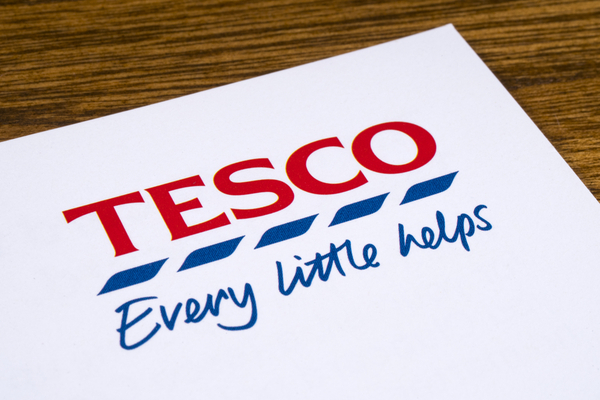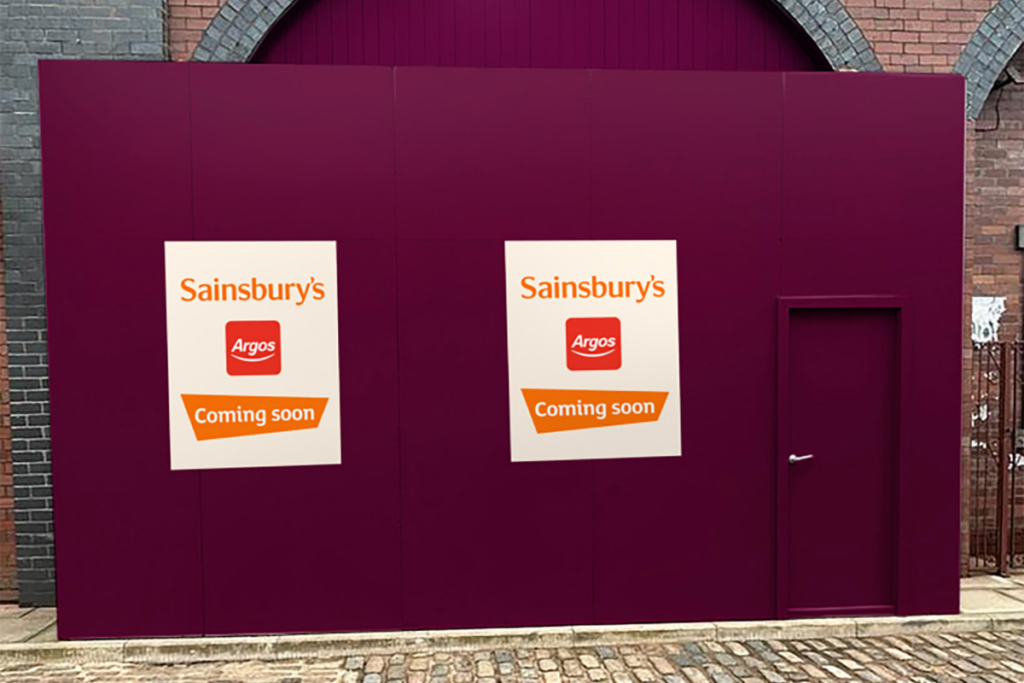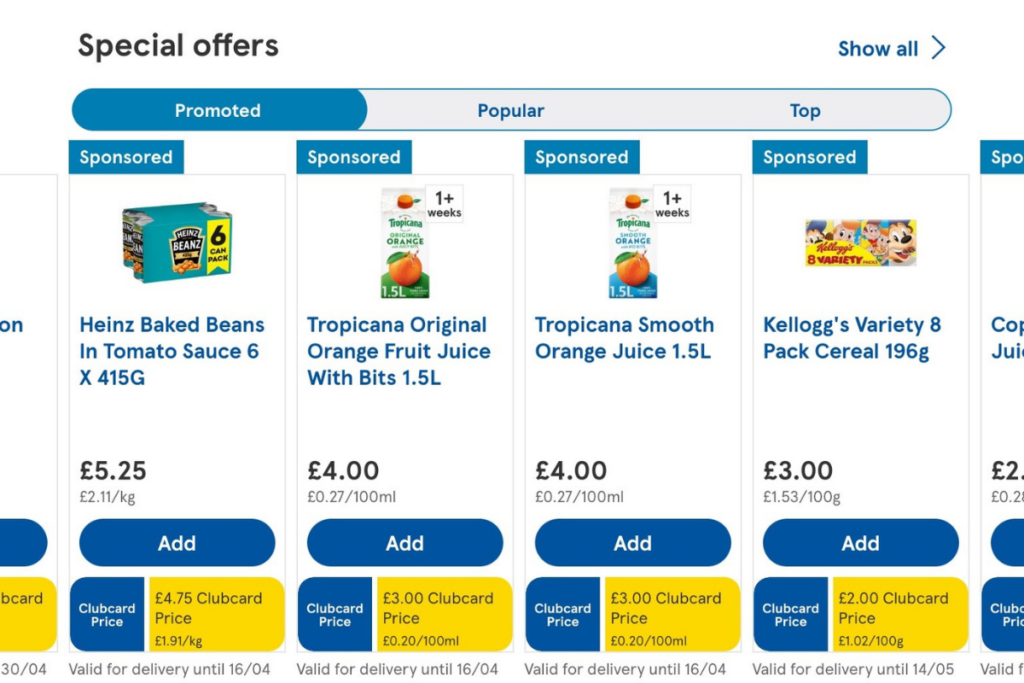Tesco has announced a raft of cuts this week – axing overnight stock replenishment, in-store counters and discount chain Jack’s – which have put 1,600 roles on the chopping block.
The grocer’s UK and Ireland chief executive Jason Tarry says the changes would make Tesco more efficient so it could re-invest savings into things that matter to its customers.
Tarry explains: “We operate in a highly competitive and fast-paced market and our customers are shopping differently, especially since the start of the pandemic.”
“We are always looking at how we can run our business as simply and efficiently as possible, so that we can re-invest in the things that matter most to customers.”
And what matters most to customers right now is price.
Inflation is at a 30-year high and budgets are squeezed. This is only going to get worse when energy price rises and the National Insurance hike come into play in April.
Retail Economics chief executive Richard Lim says: “April brings a perfect storm and its going to hit less affluent households particularly hard. In this environment, customers will be looking for value and will be trading down. I’d expect a flight to the discounters that we saw during the last recession.”
There’s already evidence this is happening. The latest Kantar figures for the 12 weeks to 23 January showed Aldi and Lidl sales and market share growing, the first time this has happened since June last year.
Keeping inflation at bay
To avoid losing out to the discounters, the big four must keep prices low.
There are undoubtedly Herculean efforts going on behind the scenes to minimise the impact of inflation and Tesco is doing a better job than most.
According to research from Assosia, the price of a basket of 18 staples has risen 8.3% across the grocery market, but just 0.8% at Tesco. This compares to a 15.3% rocket at Morrisons and a 13.6% jump at Asda.

Efficiencies are being sought across Tesco’s business and supply chain.
Chief executive Ken Murphy said last month: “We have got plans for efficiency and sourcing that means we keep prices as competitive as possible for our customers.
“We have been in a state of deflation in food for the past 10 years and it is possible we will see some inflation but we will do our best to minimise it.”
Tesco may be succeeding at keeping prices low but are its latest round of cuts justified?
Let’s take them one by one.
Jacking it in
Ditching Jack’s, the discounter chain it set up in 2018, is “sad but inevitable” to compete with Aldi and Lidl, according to Bryan Roberts, founder of consultancy Shopfloor Insights.
To genuinely compete with the discounters Jack’s needed hundreds of stores not just 13, argues Roberts, which requires a lot of investment.

Meanwhile, Tesco has shown it can take on Aldi and Lidl itself. When it unveiled its third quarter results last month, Tesco boasted it achieved its highest market share in four years and had achieved 22 consecutive periods of switching gains, according to Kantar data.
It’s a far bigger win to have Tesco beat Aldi and Lidl while being distinctly Tesco, than a much-smaller Jack’s chain trying to beat the discounters at their own game.
In a climate when the core Tesco business motoring, it’s hard to see Jack’s winning the case for the investment to rollout stores.
Although some have dubbed Jack’s an expensive mistake, Roberts is kinder and says Tesco has “learnt a lot, brought lots of efficiencies back to the main brand”. “It wasn’t a complete waste of time,” he adds.
Tarry says that what it has learned from Jack’s “has helped Tesco become more competitive, more efficient and strengthened our value proposition, including through the launch of Aldi Price Match”.
“In turn, this has enabled us to consistently attract new customers to Tesco from our competitors over the last two years and we know they increasingly recognise the value they can find at Tesco,” says Tarry.
“With the learnings from Jack’s now applied, the time is right to focus on ensuring we continue to deliver the best possible value for customers in our core business.”
Cutting counters
Another of the grocer’s cuts comes in the form of getting rid of its fish, meat and deli counters in 317 stores. This is not new in grocery, in fact, Sainsbury’s shut all of its food counters down just over a year ago.
It is sad, as so many butchers, fishmongers and delis have disappeared from our high streets, unable to compete with the sharp prices of the big supermarkets, however, Roberts does concede that they were not a thriving part of Tesco’s business.
“If you go into store, they look pretty empty. Staff behind the counter aren’t exactly rushed off their feet. People just simply aren’t using them,” he says.

Indeed, Tarry insists the decision has been made on the back of dwindling demand over recent years and says the 317 stores where the counters will be axed are those where demand is lowest.
However, Roberts does point out that Tesco did not have its counter model right. “Morrison’s really nails it here. Staff on the counter aren’t waiting around for someone to order a rack of lamb, they are packaging meat and fish to go on the shop floor.”
He believes those grocers that still offer a counter service, which elevates and personalises the experience for shoppers, have a competitive advantage. In fact, Waitrose vowed to up its focus on counters in the aftermath of Sainsbury’s closing all of its offer in late 2020.
“You get the feeling that Morrisons will be rubbing their hands with glee after Tesco’s announcement,” says Roberts.
READ MORE:
- Tesco axes overnight stock replenishment putting 1,600 roles at risk
- Tesco closes counters at 317 stores and axes discount chain Jack’s
No more night shift
Perhaps the most controversial cut is axing stock replenishment on the night shift. It’s certainly the most costly in terms of jobs lost, with more than 1,400 roles at risk.
Tesco plans to move replenishment into the day shift, when shoppers are in store. Roberts, who worked on the Tesco shopfloor for a period during the pandemic, says this is a “far less efficient” way to carry out replenishment.
“You get rid of loads of people on a moderately inflated night-time salary but it makes the process much more difficult. During the night shift you can have cages being unloaded all over the shop floor. It makes it quicker and easier to replenish,” he says.

Having this task carried out during trading hours could make stores messy and haphazard, hindering the store experience for shoppers.
“At Aldi, you’re prepared to climb over mountains of cardboard to get to the products you want. You expect something different at Tesco,” says Roberts.
In fact, he points out that Sainsbury’s had previously opted to move replenishment into daytime hours but rowed back on its decision because it impacted store standards.
Tesco argues that moving replenishment to daytime hours means “more colleagues are available on the shop floor to help customers at peak times”.
However, Roberts says this could hamper both service and replenishment activities. “Having replenishment staff dragged over the shop to show a customer where the gravy is isn’t ideal,” he says.
There’s no doubt that price will be more important than ever in the year ahead as inflation hammers shoppers and retailers will need to do what they can to keep hikes to a minimum.
But price is not the only consideration. Shoppers expect a slick store experience with good service. If supermarkets don’t offer that, then they really have to offer better prices than the discounters who, it must be pointed out, are upping their own store experience.
Cutting costs without sacrificing experience is a difficult balancing act. One thing’s for sure, Tesco won’t be the only grocer grappling with this in the coming months.
All the major supermarket groups will be frantically searching for where savings can be made. We can expect more announcements like those from Tesco this week in the months ahead. Let’s hope the UK grocers don’t end up cutting what makes them special and differentiates them from the discounters.
Click here to sign up to Retail Gazette‘s free daily email newsletter


















